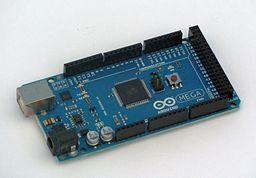Maybe a few “one-off” skills can set you apart from the herd in this competitive job market. So far
in this series, I've focused on some intangible skills, like speaking and negotiating. Today, I'd like to continue the unorthodox theme and help you expand your job search Zen into several areas you may not have considered: Linux, Arduino and the Internet of Things. These subjects have been flying under the mainstream IT radar for years. While “the Cloud” and mobile are grabbing all the headlines, these three stealth technologies have been quietly revolutionizing the world. Here's another shocker. Low on cash? The barriers to entry are exceedingly low.
First up, Linux.
Companies are desperately
looking for Linux talent, particularly in kernel and mobile development. (If you're new to Linux,
here are some resources to help you learn.) Why not follow in the footsteps of countless Linux gurus? Download a distribution from
distrowatch.com, burn a bootable CD or memory stick, and start using it. The days of compiling your system are long gone and most versions will actually run off the CD, leaving your existing system virtually untouched on the hard disk. You've probably heard of
Ubuntu. I use a variation called
Xubuntu. It's a fast, full featured version of Linux with an easy-to-use desktop interface. It works so well, I moved my wife and daughters off of Windows years ago with absolutely no grumbling or gnashing of teeth. They appreciated that their notebooks didn't crash or act weird anymore. Linux has tons of documentation online, for just about any situation you'll ever come across. Google is your friend, as are
LinuxToday.com and
Linux Journal magazine. One reason I've been able to write Linux how-to features for the last decade is because I could always find solutions to problems online. OK, so people are starting to notice Linux. Maybe you're one of those tinkerers, who likes to make cool things in the physical world.
Arduino
You should take a look at the
Arduino. This tiny marvel of technology is basically an 8-bit computer with input, output and power circuitry built into a circuit board module. There are a couple of dozen variations. You can even run just the computer chip and several discrete components in an extremely bare-bones configuration. Part of the genius of the Arduino is that it uses electrically erasable read-only memory (EEPROM) and can be programmed “in circuit” over a serial (usually USB) connection. Also, the programming language and integrated development environment (IDE) are standardized across computing platforms, allowing just about anybody with a notebook computer to get into the microcontroller device building business. Did I mention that Arduino is Open Source and Open Hardware? The software and hardware are fully documented and users are encouraged to modify and extend the capabilities so everything can be improved. A stock Arduino module lists for about $35. You'll need a handful of discrete components, like resistors, LEDs and potentiometers, along with a battery, some hookup wires, and a bread board. Programming is accomplished with Processing, a language very similar to C. You write the code, compile it, convert it to machine language then upload it to the micro-controller's memory. Resetting or powering off/on the microcontroller starts the program automatically. Obviously, you'll also need some kind of Windows or Linux notebook, but it doesn't have to be anything fancy. Kits and components can be ordered from
Sparkfun,
Adafruit and
O'Reilly's Maker Shed. The possibilities to automate things with an Arduino microcontroller are nearly endless. You should definitely explore the “
World Famous Index of Arduino and Freeduino Knowledge." Hack N' Mod has a pretty cool
list of interesting Arduino projects. And, you'll certainly want to pick up
Physical Computing and
Making Things Talk to get a comprehensive, practical foundation on electrical and digital microcontroller concepts. Tom Igoe, a co-author of the first and sole author of the second book, is a professor in the Tisch School of the Arts at New York University. He helped design the Arduino so non-techies (like artists) could automate and make their various works interactive. Interest has spread across the creative spectrum from robotic hobbyists to musicians to “
breathing books.” Documentation and tutorials are everywhere and capabilities are only limited by your imagination.
30 Arduino Projects For The Evil Genius might also be a useful text.
And finally...
...I'd like to mention “
the Internet of Things.” A whole culture has grown up around hooking everyday sensors, devices and appliances to the network. Your thermostat might talk to your A/C unit. Your car may have an IP address and send engine data to a server for analysis and diagnostics. Geiger counters may be hooked up to Arduinos, which feed into Web pages to monitor the
radiation levels around the damaged nuclear reactors in Japan, in real-time. One of my old clients,
Pachube, is leading the charge. Pachube is a clearing house for data streams and has vast experience with Arduino microcontrollers. You can upload and download data to its servers through a standardized API. The cool thing is that the data streams are freely available to other Pachube members. Feeds are also displayed and customized on their own Web pages. There are various membership options including a basic, free account. One guy detects the number of
bats going into and out of his bat-house, using a set of infra-red light sensors. Lots of other companies are getting into “the Internet of Things.” Some call it M2M, machine to machine, or the "Web of Things." I hope your interest has been piqued and you will look into these exciting new technologies. You never know where a little experience with some of this cutting-edge stuff will take you. Photo:
Andy Dingley 


